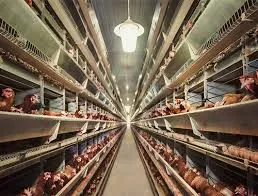air cooler evaporative cooling pad
Oct . 22, 2024 08:05 Back to list
air cooler evaporative cooling pad
Understanding Air Coolers and Evaporative Cooling Pads
Air coolers, also known as evaporative coolers or swamp coolers, are an innovative and energy-efficient way to keep indoor environments comfortable during hot weather. Unlike traditional air conditioning systems that utilize refrigerants and compressors, evaporative coolers harness the natural process of evaporation to cool the air. A critical component of this technology is the evaporative cooling pad, which plays a significant role in enhancing the efficiency and effectiveness of the cooling process.
How Do Air Coolers Work?
The principle behind air coolers is relatively straightforward. They primarily operate by drawing warm air from the environment through specially designed cooling pads, which are soaked in water. As the hot air passes through these pads, the moisture evaporates, absorbing heat from the air in the process. This results in cooler, more humid air being released back into the room. The cooler air can drop the temperature significantly when compared to the outside air, making it a desirable option for many regions, particularly those that experience dry heat.
The Role of Cooling Pads
The cooling pad is integral to the operation of air coolers. Typically made from materials such as cellulose, aspen fibers, or synthetic materials, these pads are designed to maximize surface area. The larger the surface area, the more effective the pad is at promoting evaporation. The choice of material also influences the pad's durability and effectiveness. Cellulose pads, for instance, are renowned for their ability to retain moisture longer than other materials, leading to better cooling performance over extended periods.
Benefits of Using Evaporative Cooling Pads
1. Energy Efficiency Air coolers equipped with high-quality evaporative pads consume significantly less electricity than conventional air conditioning systems. This not only leads to lower utility bills but also reduces the overall environmental impact.
air cooler evaporative cooling pad

2. Environmentally Friendly Since air coolers use water as the primary cooling element, they do not rely on harmful refrigerants that can contribute to greenhouse gas emissions. This makes them a more sustainable option for cooling indoor spaces.
3. Improved Air Quality Evaporative cooling helps maintain humidity levels, which can be beneficial in arid conditions. It also filters dust and other particles as air passes through the pads, contributing to better indoor air quality.
4. Cost-Effectiveness Air coolers are generally less expensive to purchase and maintain than traditional air conditioning units. The initial investment is lower, and the operational costs are also reduced due to lower energy consumption.
Maintenance of Cooling Pads
To ensure optimal performance, regular maintenance of the evaporative cooling pads is essential. This includes cleaning the pads to prevent the buildup of mold and bacteria, checking for any wear and tear, and replacing them when necessary. Most manufacturers recommend replacing the pads at least once a season to ensure efficient operation.
Conclusion
In summary, air coolers with evaporative cooling pads present an excellent alternative to traditional air conditioning, especially in dry climates. They offer significant benefits, including energy efficiency, improved air quality, and sustainability. By understanding the components and maintenance requirements of these systems, users can enjoy a comfortable and environmentally friendly cooling solution. Investing in an air cooler with a high-quality evaporative cooling pad is not only a smart choice for comfort but also a step towards a greener future.
-
Hot Sale 24 & 18 Door Rabbit Cages - Premium Breeding Solutions
NewsJul.25,2025
-
Automatic Feeding Line System Pan Feeder Nipple Drinker - Anping County Yize Metal Products Co., Ltd.
NewsJul.21,2025
-
Automatic Feeding Line System Pan Feeder Nipple Drinker - Anping County Yize Metal Products Co., Ltd.
NewsJul.21,2025
-
Automatic Feeding Line System - Anping Yize | Precision & Nipple
NewsJul.21,2025
-
Automatic Feeding Line System - Anping Yize | Precision & Nipple
NewsJul.21,2025
-
Automatic Feeding Line System-Anping County Yize Metal Products Co., Ltd.|Efficient Feed Distribution&Customized Animal Farming Solutions
NewsJul.21,2025






